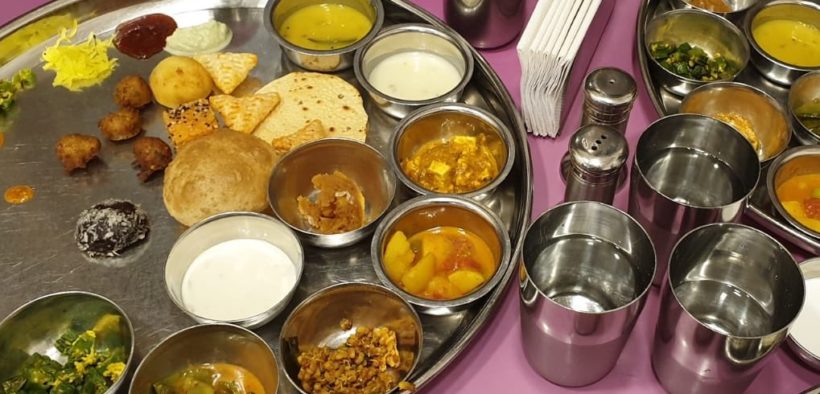आर्थिक समीक्षा: आम लागों के लिए भोजन की थाली अब और सस्ती हुई

केंद्रीय वित्त एवं कॉरपोरेट कार्य मंत्री श्रीमती निर्मला सीतारमण ने आज संसद में आर्थिक समीक्षा, 2019-20 पेश की। समीक्षा में कहा गया है कि अब औद्योगिक श्रमिकों की दैनिक आमदनी की तुलना में भोजन की थाली और सस्ती हो गई है।
समीक्षा पेश करते हुए श्रीमती सीतारामण ने कहा कि 2006-2007 की तुलना में 2019-20 में शाहाकारी भोजन की थाली 29 प्रतिशत और मांसाहारी भोजन की थाली 18 प्रतिशत सस्ती हुई हैं।
भारत में भोजन की थाली के अर्थशास्त्र के आधार पर समीक्षा में यह निष्कर्ष निकाला गया है। यह अर्थशास्त्र भारत में एक सामान्य व्यक्ति द्वारा एक थाली के लिए किए जाने वाले भुगतान को मापने का प्रयास है। भारतीयों के लिए दैनिक आहार से संबंधित दिशा-निर्देशों की सहायता से थाली की मूल्य का आंकलन किया गया है। इसके लिए अप्रैल 2006 से अक्टूबर 2019 तक 25 राज्यों और केंद्रशासित प्रदेशों के लगभग 80 केंद्रों से औद्योगिक श्रमिकों के लिए उपभोक्ता मूल्य सूचकांक से कीमतों के आंकड़ों का इस्तेमाल किया गया है।
समीक्षा के अनुसार संपूर्ण भारत के साथ-साथ इसके चारों क्षेत्रों – उत्तर, दक्षिण, पूर्व और पश्चिम में यह पाया गया कि शाकाहारी भोजन की थाली की कीमतों में 2015-16 से काफी कमी आई है। हालांकि, 2019 में इनकी कीमतों में तेजी रही। ऐसा सब्जियों और दालों की कीमतों में पिछले वर्ष की तेजी के रूझान के मुकाबले गिरावट का रूख रहने के कारण हुआ है। इसके परिणामस्वरूप 5 सदस्यों वाले एक औसत परिवार को जिसमें प्रति व्यक्ति रोजना न्यूनतम दो पौष्टिक थालियों से भोजन करने हेतु प्रतिवर्ष औसतन 10887 रूपये जबकि मांसाहारी भोजन वाली थाली के लिए प्रत्येक परिवार को प्रतिवर्ष औसतन 11787 रूपये का लाभ हुआ है।
समीक्षा के अनुसार 2015-16 में थाली की कीमतों में बड़ा बदलाव आया। ऐसा 2015-16 में थालीनॉमिक्स अर्थात् भोजन की थाली के अर्थशास्त्र में बड़े बदलाव के कारण संभव हुआ। सरकार की ओर से 2014-15 में कृषि क्षेत्र की उत्पादकता तथा कृषि बाजार की कुशलता बढ़ाने के लिए कई सुधारात्मक कदम उठाए गए। इसके तहत अधिक पारदर्शी तरीके से कीमतों का निर्धारण किया गया। आर्थिक समीक्षा के अनुसार भोजन अपने आप में पर्याप्त नहीं है, बल्कि यह मानव संसाधन विकास का एक महत्वपूर्ण घटक भी है जो राष्ट्रीय संपदा के निर्माण में महत्वपूर्ण भूमिका निभाता है। सतत विकास लक्ष्य के तहत दुनियाभर के देश ‘जीरो हंगर’ की नीति पर सहमत हुए हैं।


















